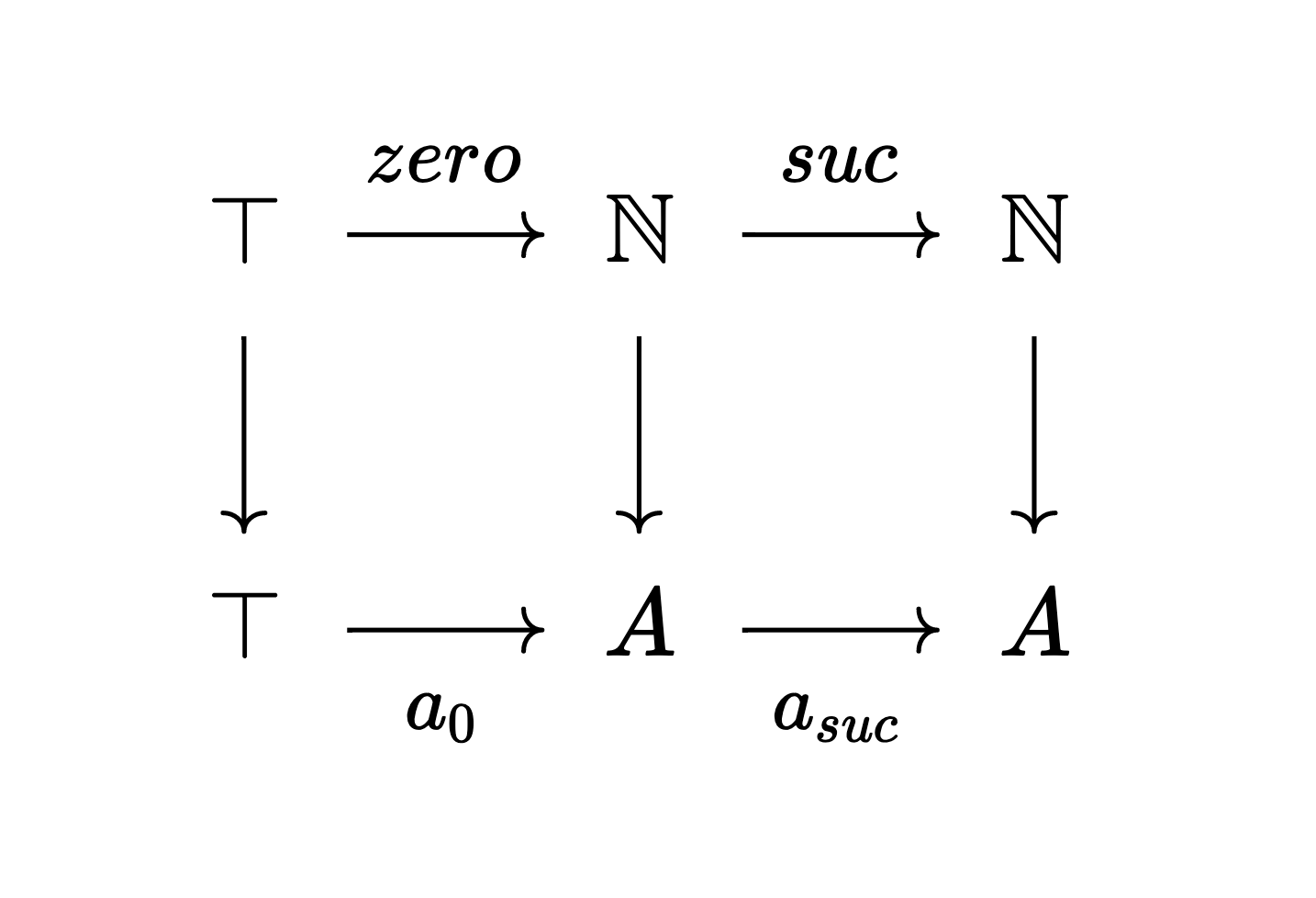4.7 KiB
Terms and Types
There are three ways of looking at A : Type.
- proof theoretically, '
Ais a proposition' - type theoretically, '
Ais a construction' - categorically, '
Ais an object in categoryType'
A first example of a type construction is the function type.
Given types A and B, we have another type A → B which can be seen as
- the proposition '
AimpliesB' - the construction 'ways to convert
Arecipes toBrecipes' - internal hom of the category
Type
To give examples of this, let's make some types first!
-- Here is how we define 'true'
data ⊤ : Type u where
trivial : ⊤
It reads '⊤ is an inductive type with a constructor trivial',
with three interpretations
⊤is a proposition and there is a proof of it, calledtrivial.⊤is a construction with a recipe calledtrivial⊤is a terminal object: every object has a morphism into⊤given by· ↦ trivial
What goes on the right of the : is called a type, and will always be in (some) Type,
and what goes on the left is called a term of that term.
The above tells you how we make a term of type ⊤,
let's see an example of using a term of type ⊤:
TrueToTrue : ⊤ → ⊤
TrueToTrue = {!!}
- press
C-c C-l(this meansCtrl-c Ctrl-l) to load the document, and now you can fill the holes - navigate to the hole
{ }usingC-c C-f(forward) orC-c C-b(backward) - press
C-c C-rand agda will try to help you (r for refine) - you should see
λ x → { } - navigate to the new hole
C-c C-,to check the goal (C-c C-comma)- the Goal area should look like
Goal: ⊤
—————————————————————————
x : ⊤
- you have a proof/recipe/generalized element
x : ⊤and you need to give a p/r/g.e. of⊤ - you can give it a p/r/g.e. of
⊤and pressC-c C-SPCto fill the hole
There is more than one proof (see solutions) - are they the same? Here is an important one:
TrueToTrue : ⊤ → ⊤
TrueToTrue x = {!!}
- Naviagate to the hole and check the goal.
- Note
xis already taken out for you. - You can try type
xin the hole andC-c C-c cstands for 'cases onx' and the only case istrivial.
Built into the definition of ⊤ is agda's way of making a map out of ⊤
into another type A, which we have just used.
It says to map out of ⊤ it suffices to do the case when x is trivial, or
- the only proof of
⊤istrivial - the only recipe for
⊤istrivial - the only one generalized element
trivialin⊤
-- Here is how we define 'false'
data ⊥ : Type u where
It reads '⊥ is an inductive type with no constructors',
with three interepretations
⊥is a proposition with no proofs⊥is a construction with no recipes- There are no generalized elements of
⊥(it is a strict initial object)
Let's try mapping out of ⊥.
explosion : ⊥ → ⊤
explosion x = {!!}
- Navigate to the hole and do cases on
x.
Agda knows that there are no cases so there is nothing to do! This has three interpretations:
- false implies anything (principle of explosion)
- ?
⊥is initial in the categoryType u
We can also encode "natural numbers" as a type.
data ℕ : Type where
zero : ℕ
suc : ℕ → ℕ
As a construction, this reads '
ℕis a type of constructionzerois a recipe forℕsuctakes an existing recipe forℕand gives another recipe forℕ. '
We can see ℕ as a categorical notion:
ℕ is a natural numbers object in the category Type,
with zero : ⊤ → ℕ and suc : ℕ → ℕ such that
given any ⊤ → A → A there exist a unique morphism ℕ → A
such that the diagram commutes:

This has no interpretation as a proposition since there are 'too many terms/proofs' - mathematicians classically didn't distinguish between proofs of the same thing. (ZFC doesn't even mention logic internally, unlike Type Theory!)
To see how to use terms of type ℕ, i.e. induct on ℕ,
go to Quest1!
Universes
You may have noticed the notational similarities between
zero : ℕ and ℕ : Type.
Which may lead to the question Type : ?.
We simply assert Type : Type 1,
but then we are chasing our tail, asking Type 1 : ?.
Type theorists make sure that every type (the thing on the right side of the :)
itself is a term, and every term has a type.
So what we really need is
Type : Type 1, Type 1 : Type 2, Type 2 : Type 3, ⋯
These are called universes. We will see definitions, for example groups that will require multiple universes.